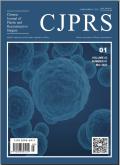Breast augmentation complications with three planes of implant placements
Chinese Journal of Plastic and Reconstructive Surgery
Pub Date : 2025-03-01
DOI:10.1016/j.cjprs.2024.12.002
引用次数: 0
Abstract
Breast augmentation with implants is a popular cosmetic surgery that enhances breast volume and contour through various placement planes. In this review, we examine the impact of subglandular, subpectoral, and subfascial implant planes on postoperative outcomes and complication rates. Subglandular placement offers simplicity but is associated with higher risks of capsular contracture, hematoma, and rippling in patients with low tissue coverage. The subpectoral plane, widely adopted for its natural appearance and reduced capsular contracture risk, may cause dynamic deformity due to muscle contraction. Although technically challenging, the subfascial plane combines the benefits of soft tissue support and reduced implant displacement. We highlight the importance of choosing an optimal implant plane tailored to each patient’s anatomical and aesthetic needs to enhance surgical outcomes and minimize complications. Further research is needed to validate long-term efficacy, particularly for subfascial placement.
三平面植入隆胸的并发症
隆胸是一种流行的整容手术,通过不同的植入平面来增加乳房的体积和轮廓。在这篇综述中,我们研究了腺下、胸下和筋膜下植入平面对术后结果和并发症发生率的影响。腺体下放置方法简单,但组织覆盖率低的患者出现囊膜挛缩、血肿和波纹的风险较高。胸下平面因其自然的外观和减少包膜挛缩的风险而被广泛采用,但可能由于肌肉收缩而导致动态畸形。虽然技术上具有挑战性,但筋膜下平面结合了软组织支持和减少种植体移位的优点。我们强调选择适合每位患者解剖和美学需求的最佳植入平面的重要性,以提高手术效果并减少并发症。需要进一步的研究来验证其长期疗效,特别是在筋膜下放置。
本文章由计算机程序翻译,如有差异,请以英文原文为准。
求助全文
约1分钟内获得全文
求助全文
来源期刊

Chinese Journal of Plastic and Reconstructive Surgery
Surgery, Otorhinolaryngology and Facial Plastic Surgery, Pathology and Medical Technology, Transplantation
CiteScore
0.40
自引率
0.00%
发文量
115
审稿时长
55 days
 求助内容:
求助内容: 应助结果提醒方式:
应助结果提醒方式:


